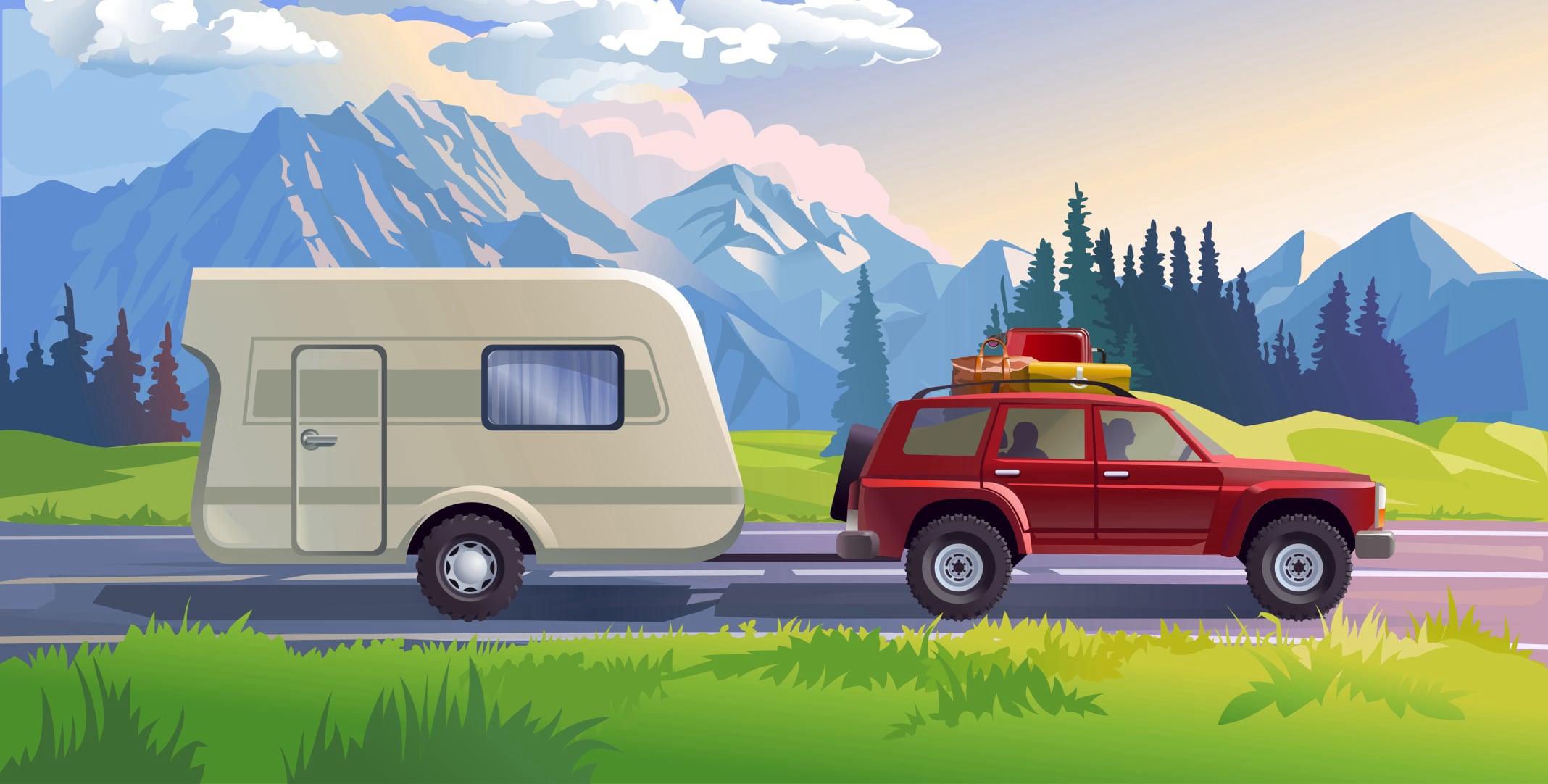

Not a subject covered in depth by us, but due to the laws being changed on trailer licences we felt we should cover at least the basics.
In this subject we will cover,
Loading your towed vehicle correctly.
Checking the Nose weight.
How to hitch up properly.
Breakaway cable.
Tow Ball.
Stabilisers.
Electrics.
Tyres.
Brakes.
Snaking.
Loading the Caravan / Trailer correctly
Loading your towed vehicle correctly is one of the biggest factors to consider for safe towing. An incorrectly loaded towed vehicle is an accident waiting to happen.
Things that need to be considered before even loading the towed vehicle are.
What is the maximum combined loaded weight the tow vehicle can safely tow? This figure will be the weight of the car, the towed vehilce and the load within that towed vehicle. Referred to as the GTW (gross train weight)
Your vehicle manufacturer should have all these details in your owners handbook. If you cannot find it, speak to your local dealer to gain this information.
The fitted Tow bar should also have a rating which should also be checked.
Ensure that your towing vehicle and the towed vehicle is in a roadworthy condition, and that you carry the correct licence and insurance to be able to tow a vehicle.
In December 2021 the law changed. If you passed your driving test from January 1st 1997, you are now allowed to tow trailers up to 3,500KG
Once you have checked the above then consider how you are going to load your towed vehicle.
For safety, ensure the load is evenly distributed and secure, with the main weight distributed over the towed vehicles axles.
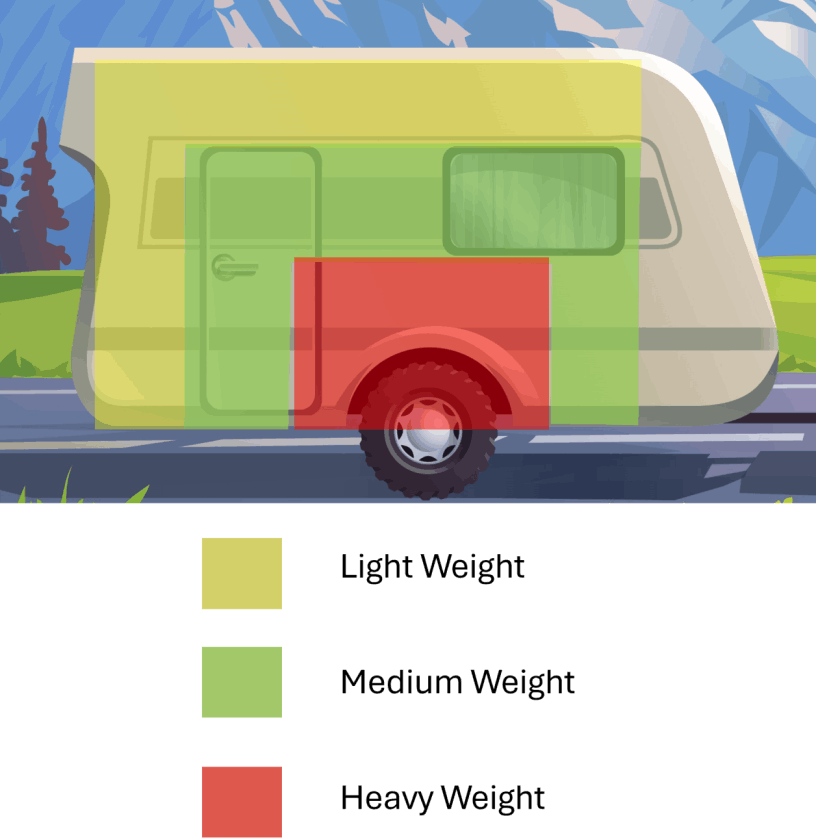
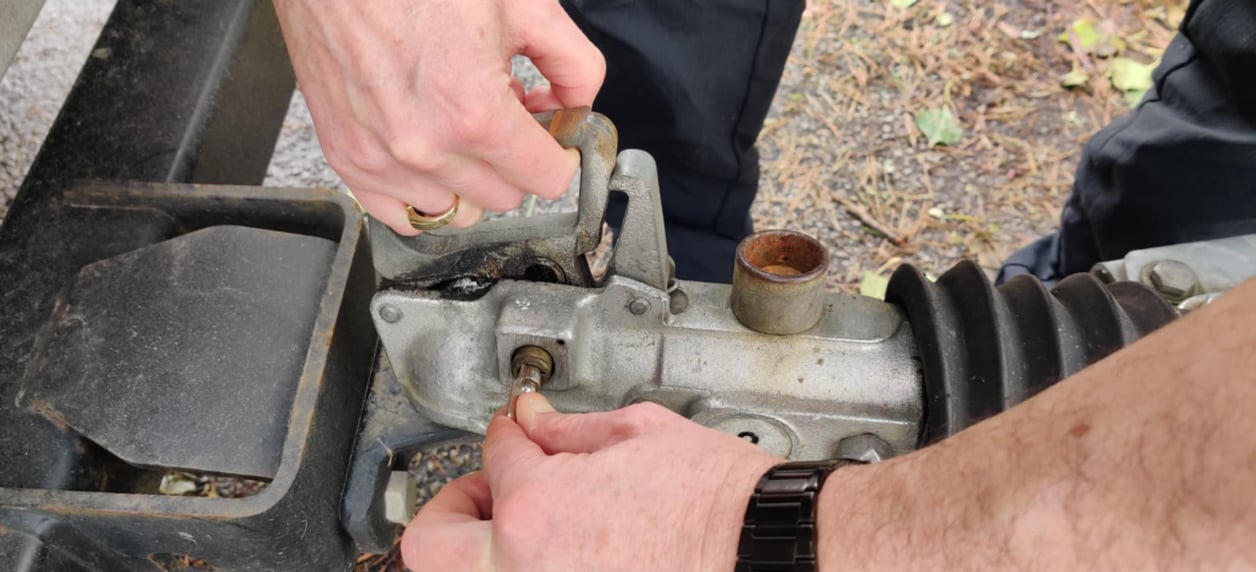
To secure the hitch to the ball.
There are various types of hitch, but they all do the same job, and that is to connect your trailer/caravan to your vehicle. Always ensure that the hitch is compatible with the Tow ball that it is being connected to.
Image: Shaun Dymond
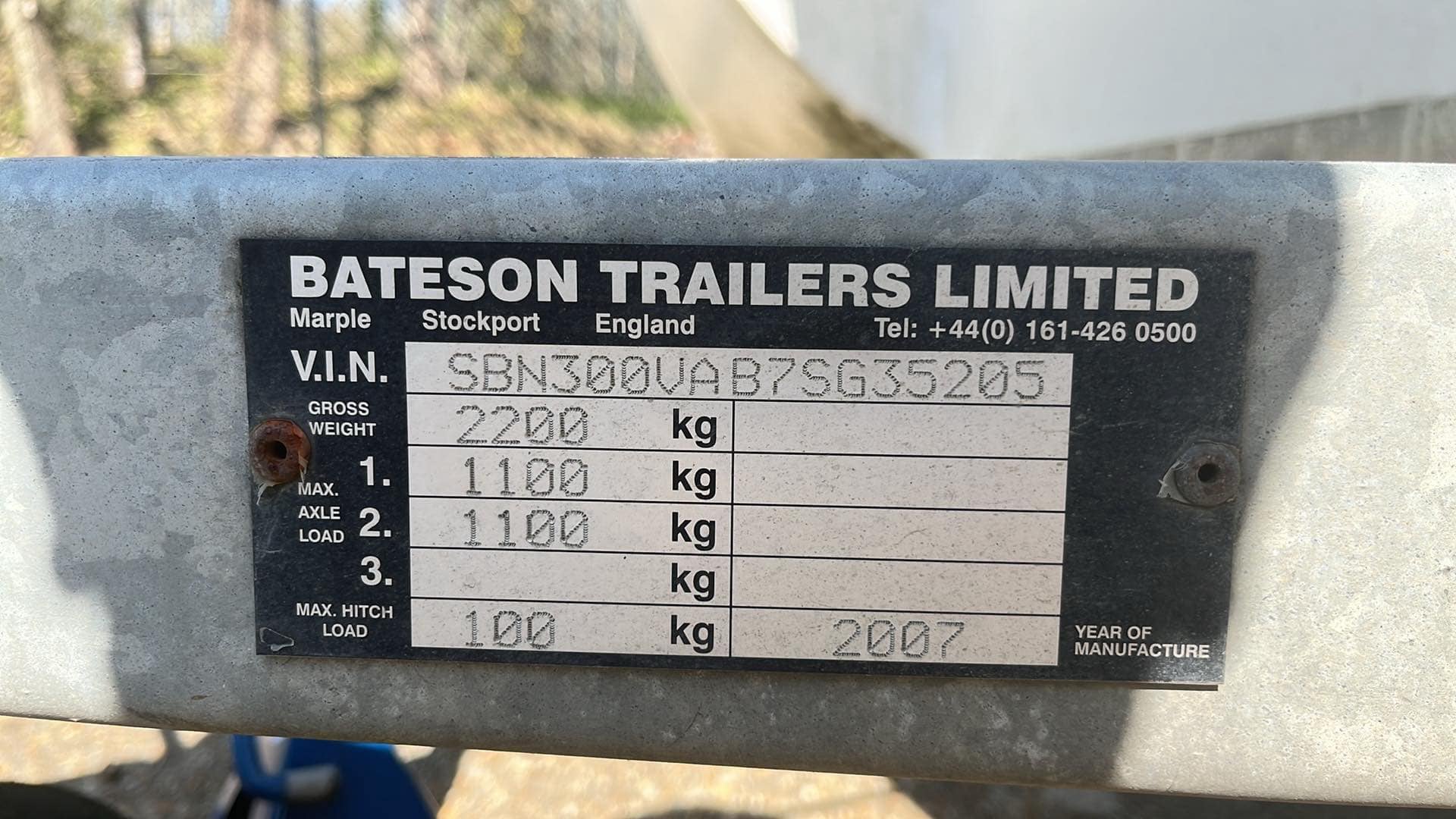
Gives the Vehicle Identification Number / when the vehicle was manufactured / The gross weight of the vehicle and axle weights / and the maximum nose weight to the hitch.
Image:Mark Wise

The handbrake lever (with the rubber grommet on it) is used to secure the trailer/caravan when not in use. It is virtually the same typical system used for a handbrake on older cars (more modern cars are turning to electronic parking brakes)
Image: Mark Wise
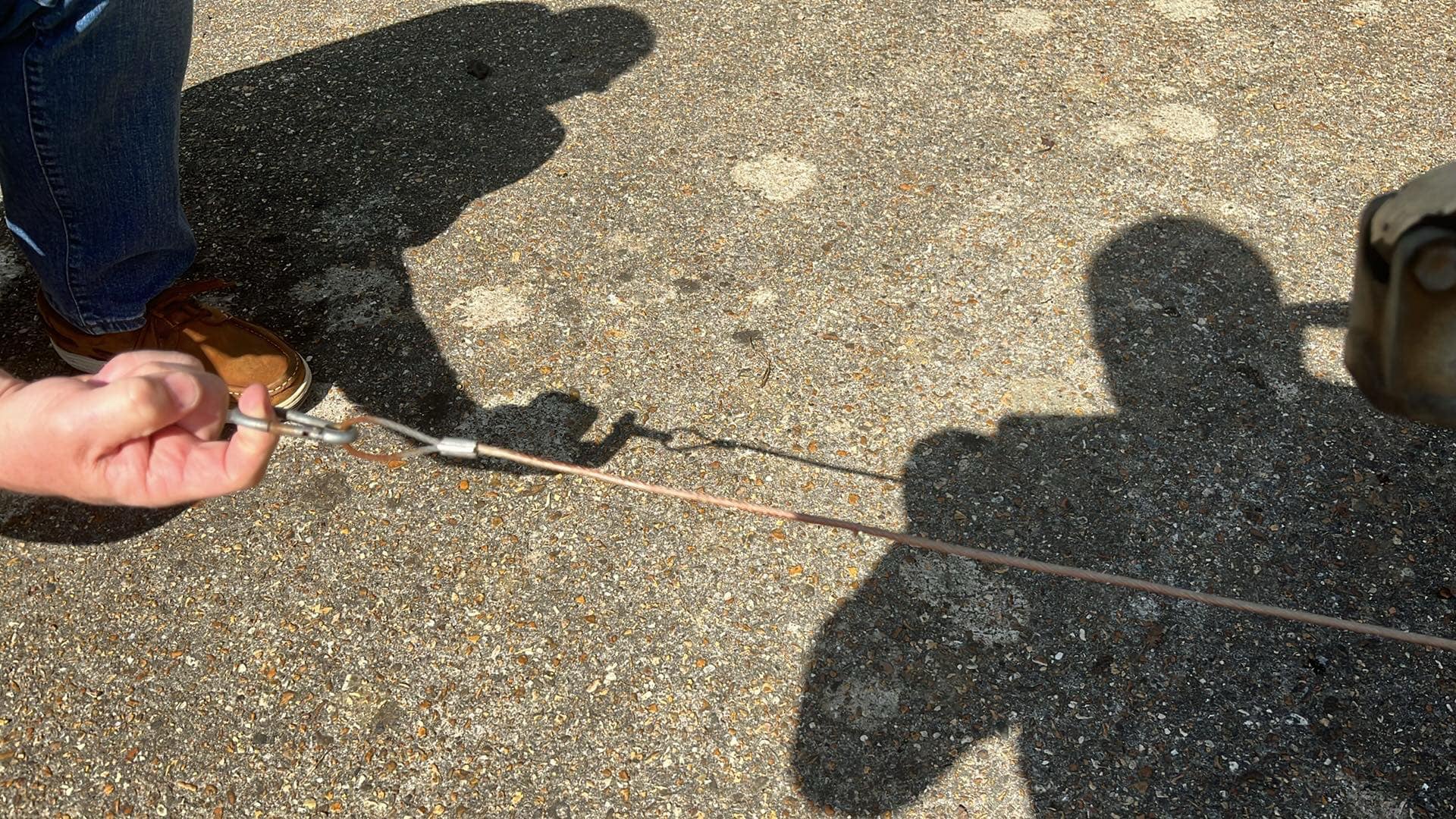
Used to make the brakes activate should the trailer/caravan become unhitched during travel.
Image: Mark Wise

There are 4 main fixing points for breakaway cables. This is one of them.
Image: Shaun Dymond
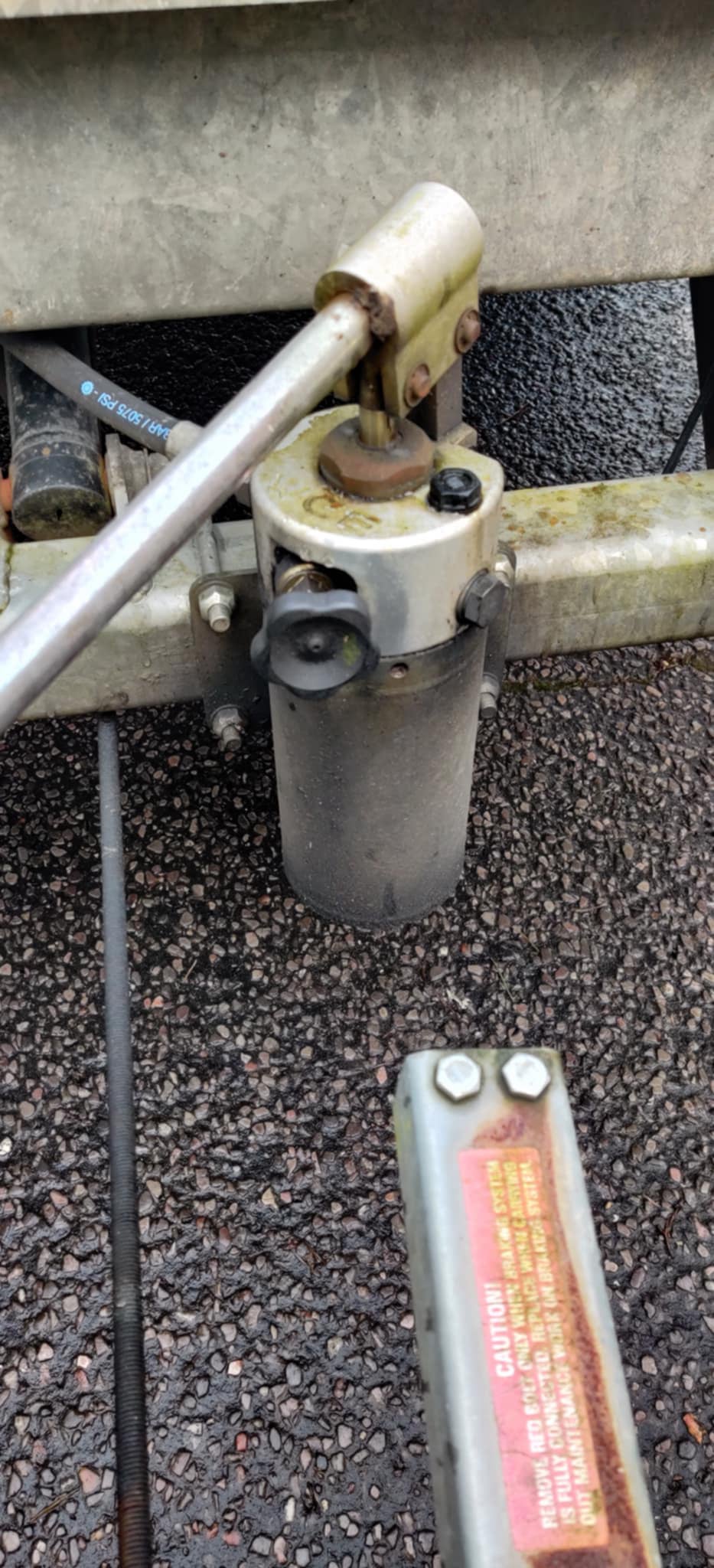
The unit contains hydraulic fluid and when the lever is pumped up and down, the flat bed of the trailer will raise by putting that hydraulic fluid into a hydraulic ram.
Image: Shaun Dymond

The jockey wheel is lowered to the floor and locked in place, then by rotating the handle at the top of it the jockey wheel with either lower/raise as required to allow the vehicle to be moved.
Image: Mark Wise
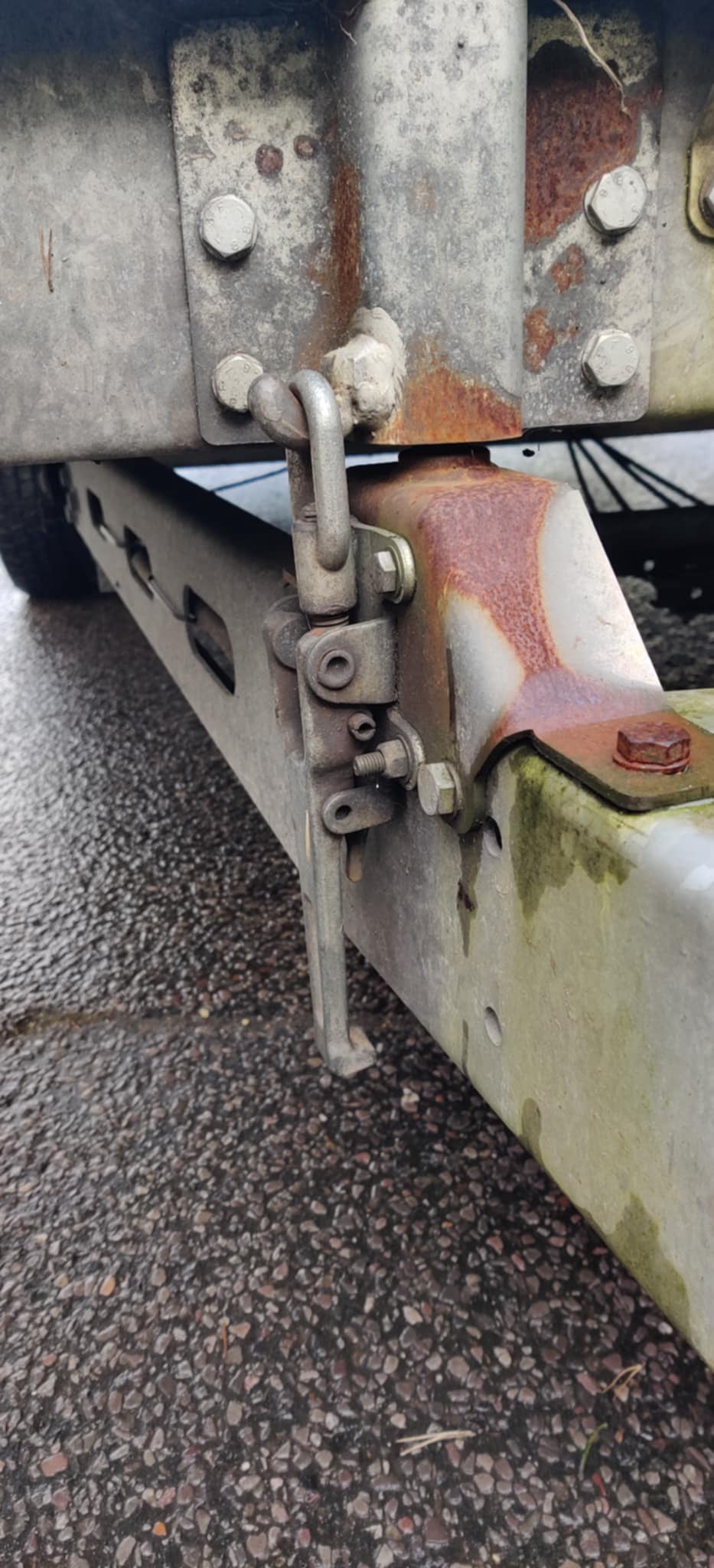
To avoid the bed from raising while in transit.
Image: Shaun Dymond
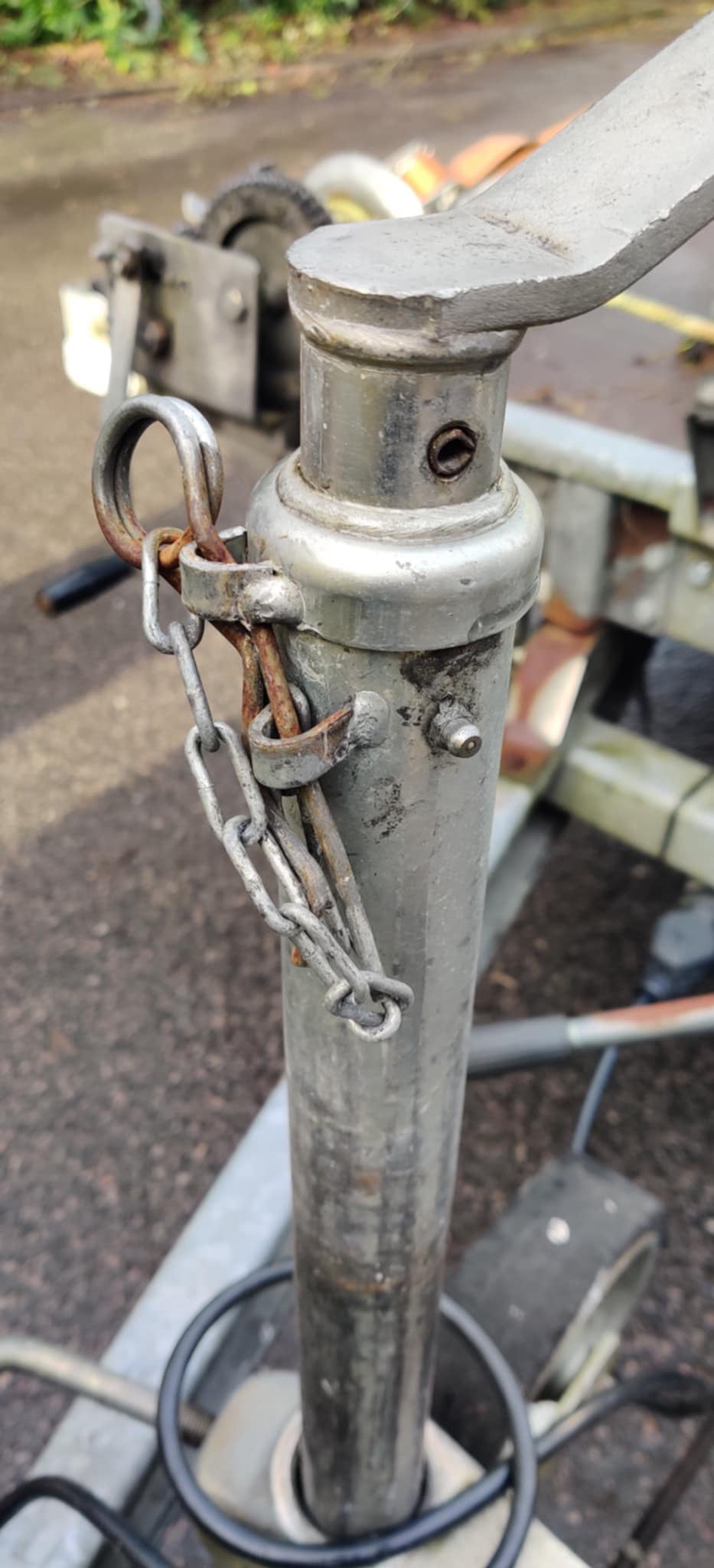
To avoid the jockey wheel from lowering during travel.
Image: Shaun Dymond
There are various different types of Breakaway cable but they serve the same purpose. Just ensure you purchase one that rates to the weight of the towed vehicle.
Some Caravans/trailers have connection points for the breakaway cable always ensure the correct position is located so that the brakes engage should the caravan/trailer become unhitched.
There are also various connection points at the tow bar end, also ensure that the cable is connected appropriately and that it wont interfere with any of the caravan/trailer electrics or become snagged elsewhere.
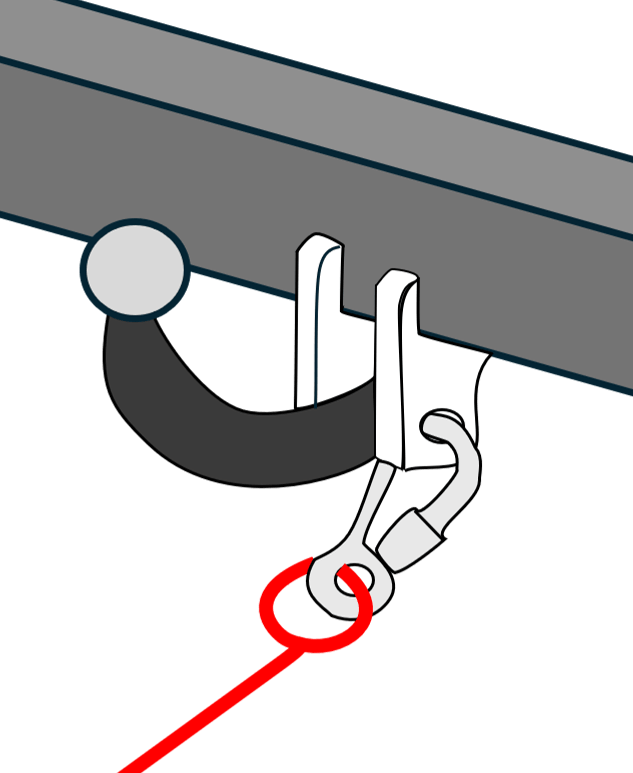
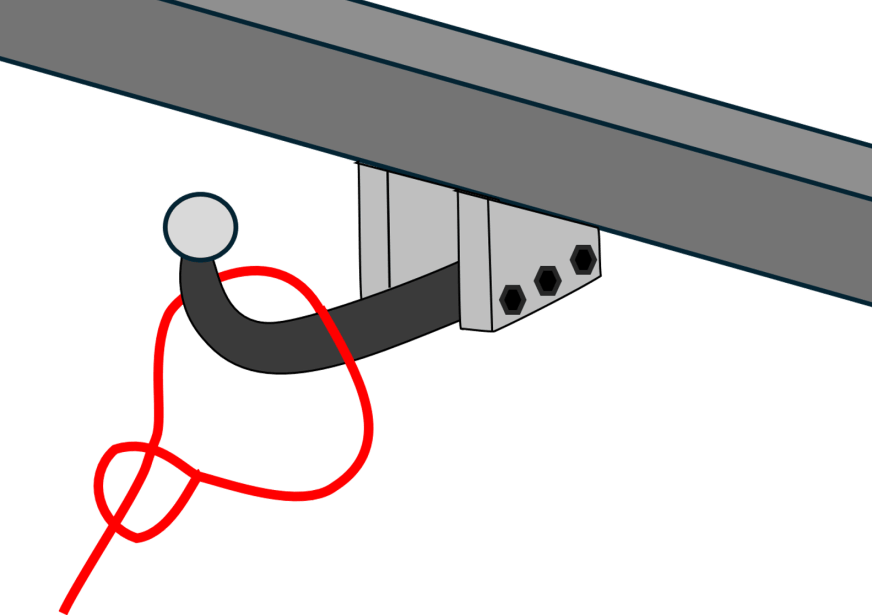
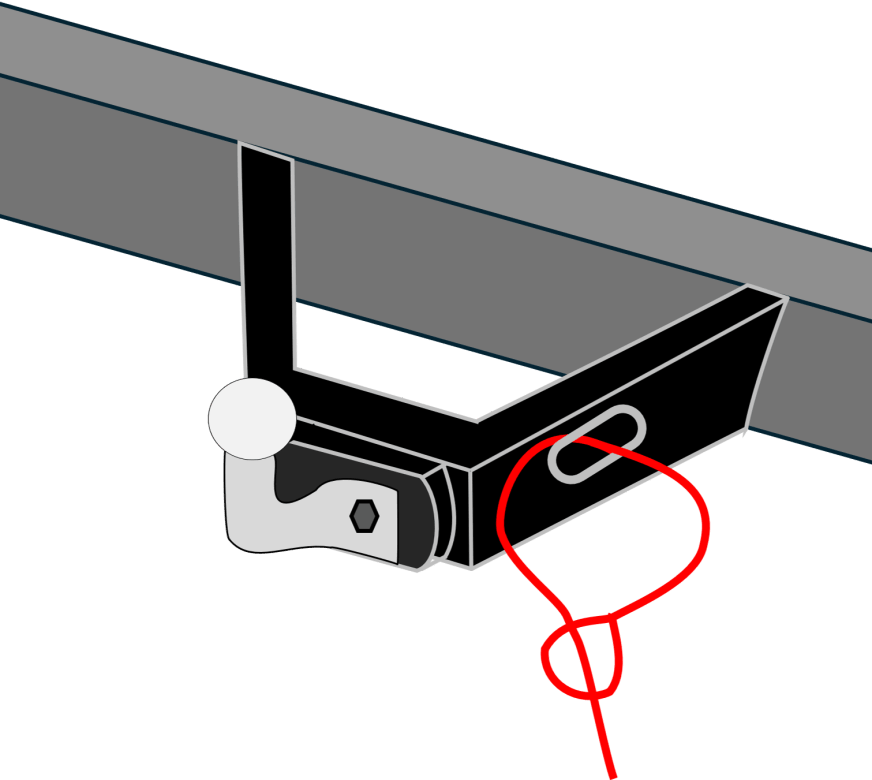
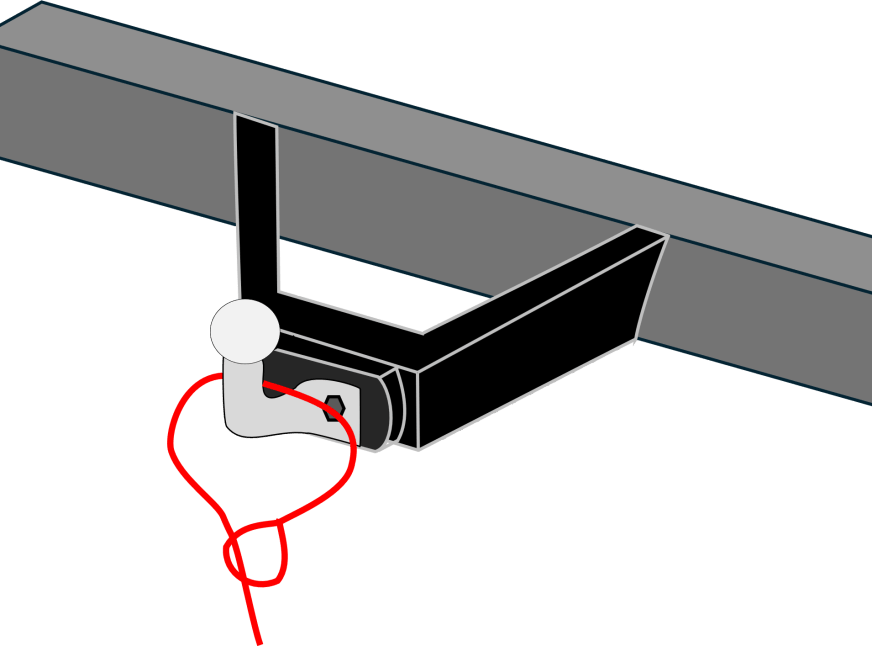
Ensure any wheel clamps, Hitchlock or axle locks have been removed.
If you are on level ground, reverse the car towards the Caravan/trailer.
If you are on a slope, ensure you chock the wheels first to avoid any roll and ensure the towed vehicle's handbrake is applied.
Raise all stability legs fully and then raise the Jockey wheel so that the hitch will be higher than the Tow ball.
Reverse the car towards the Caravan/trailer, ideally it is useful to have someone with you to guide you onto the Tow ball.
If you are using a motor mover, always ensure you remove it once the caravan/trailer has been hitched up.
Image: Mark Wise
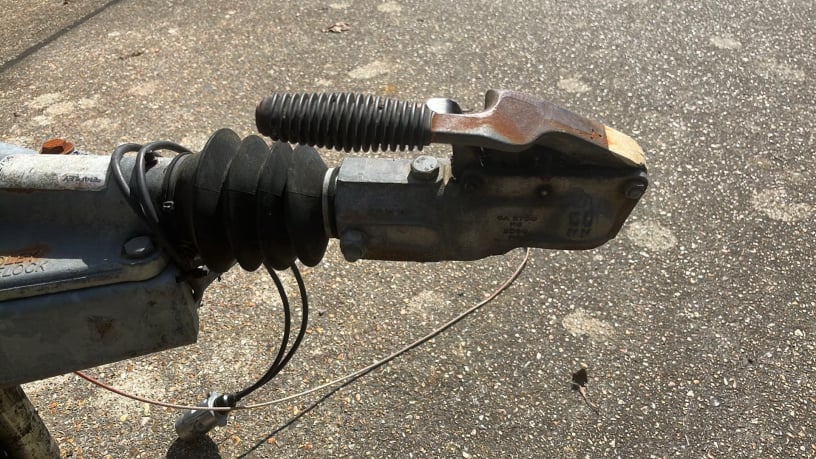
With the Tow ball beneath the Hitch, open the Hitch handle and lower the nose of the Caravan/trailer onto the Tow Ball until you feel the Caravan/trailer connect. On some Hitches there is a green indicator that shows a proper connection has been made.
To ensure that a proper connection has been made, if you wind the jockey wheel down, the nose of the caravan will lift without becoming detached from the tow ball.
If a successful connection, raise and stow the Jockey wheel by winding it all the way up and lock it in place.
Ensure the Jocker wheel winder and clamp are tight.
Should the Jockey wheel release whilst on your journey, it is highly likely it will become damaged beyond repair and of no use to you once you complete your journey.
Image: adipdi-resource

Depending on the age of your vehicle you may have two plugs. And on newer vehicles you may have plugs that once inserted you have to twist them as well to make sure they are connected correctly.
Ensure no cable is loose and touching the floor as this will become damaged in a very short space of time if it touches the roads surface.
Image: adipdi-resource

A Stabiliser helps to increase stability and reduce any wobble from the caravan from general driving and uneven road surfaces.
There are various more advanced Stabilisers on the market, and some which will electronically apply braking to the caravans wheel automatically when the device detects loss of stability in the caravan being towed.
Check your electrics work.
You are nearly ready to get on with your journey, but before departing it is vital that you check that all your electrics are working outside of the caravan/trailer.
If you are turning or braking and following vehicles cannot see your towing vehicles lights then how do they know where you are going?
Check that the:
Side Lights : Brake Lights : Signal Indicators : Marker Lights : Number plate Lights. All Work
If you have reversing lights and fog lights these should also be checked and functioning.
Whether towing a Caravan or Trailer, either should have a number plate fitted to match that of the towing vehicle, and should comply to the DFT standards.
TYRES and BRAKES
It is vital that the tyres and brakes are in good condition and working.
The tyres of your towed vehicle are the only thing keeping that vehicle in contact with the road. You need to ensure they have adequate and legal tread depth, are inflated to the correct pressures and that the wheel nuts are fully tightened.
The brakes (if fitted) are the additional equipment that will help reduce your speed when required rather than the weight of your towed vehicle putting additional stress on the towing vehicle.
It is a legal requirement that if brakes are fitted to a towed vehicle that they are fully functioning and the tyres are of a road legal condition.
Snaking
Snaking of any towed vehicle can be extremely scary and dangerous.
Snaking is when the towed vehicle starts to oscillate and becomes out of alignment to the tow vehicle.
If this is left to become out of control it is highly likely and accident will occur with the possibility of a "jack-knife" happening.
A very common misconception of drivers who have not had formal trailer training is to put their foot down on the gas pedal and increase speed to power through the snake.
This is possibly the worst thing you can do.
To help bring a snake under control the advice is to loosen your grip on the steering wheel. Hold it firmly but relax so you're not trying to hold the steering wheel in a fixed position.
Reduce the speed of the vehicle by lifting your feet off the pedal and avoid braking. The tow vehicle will naturally begin to slow down.
Gradually lose road speed by working your way down through the gears.
Pull over somewhere safe, using your hazards lights to warn others so that you can check your load, as this may have caused the snaking to start in the first place if it has shifted.
Ensure your Stabiliser has not come detached.
If you keep having issues with snaking it is highly likely that either:
1. Your load is not evenly distributed.
2. Your nose weight is incorrect.
3. You may be driving too fast.
Hopefully, this has given you a little insight as to how to correctly prepare yourself for towing a vehicle.
We highly advise anyone who has not had professional trailer training, to take some prior to towing for the first time.
This will not only keep you safe, your vehicles safe, but everyone around you safe as well.